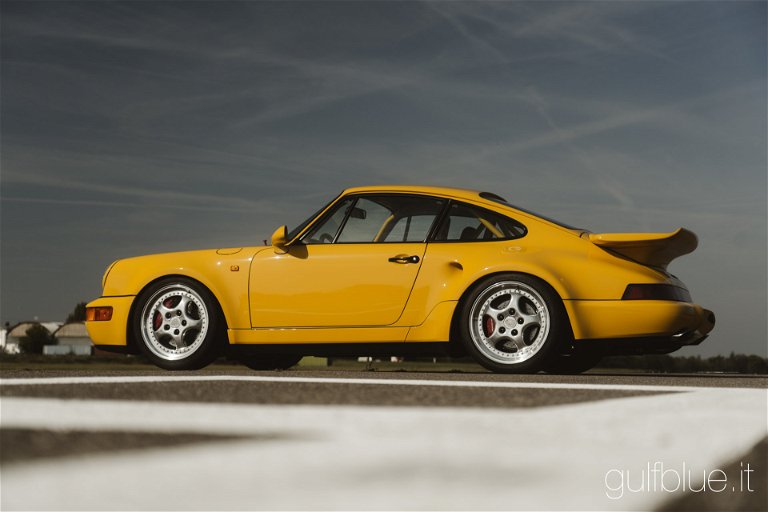Addendum: Please note this lot has entered the UK on a temporary import bond, which must be cancelled either by exporting the lot outside of the UK on an approved Bill of Lading with supporting customs documentation or by paying the applicable VAT and import duties to have the lot remain in the UK.
The brainchild of Porsche Exclusive department manager Rolf Sprenger, Porsche’s 911 Turbo S Lightweight was the very first model to be built and developed entirely within Porsche Exclusive. A small production run consisting of just 86 cars was built, all finished between July and November of 1992 for the 1993 model year. Everything was considered in extracting every ounce of performance from these new cars, which were essentially a road-legal version of the same car that captured the 1992 IMSA supercar championship.
The Turbo’s production door cards were replaced with those from the Carrera RS. The doors, the front trunk lid, and the tail spoiler were in glass fibre-reinforced carbon composite, while thinner glass was installed in the rear and side windows. In the pursuit of reducing weight as much as possible, Porsche removed comfort and convenience items such as air conditioning, power steering, rear seats, radio, insulation, and sound-deadening materials. (Customers had the ability to add some of these options back, for a more refined driving experience.) Tipping the scales at just under 1,300 kilograms, this represented a saving of more than 180 kilograms over a standard Turbo S.
Alongside the weight loss regimen, the Turbo S Lightweight’s type M30/59 SL engine was fitted with more aggressive cams, larger fuel injectors, and a more efficient KKK turbocharger, which boosted output to 381 horsepower at 6,000 rpm—a 61-horsepower improvement over the standard 3.3-litre Turbo. Visual changes announcing this special engine included rear-quarter vents derived from the 959, new front air-intake ducting, as well as a revised rear spoiler.
Of the 86-strong production run for the 964-generation Turbo S Lightweight, just 19 of these cars were completed in right-hand drive—with 11 destined for the UK, and eight others around the world. This example was specified in right-hand drive for the South African market and was completed in November 1992 and was finished in Grand Prix White, importantly configured with air conditioning reselected. Despite being built for the South African market, the car was shipped to a significant supercar collector located in Asia, where it remained in storage as part of his immense collection. During this time, the car was very rarely driven, and as of today it has covered just 130 kilometres (~81 miles) from new.
As a result of the humid climate from where it resided, the car’s original paintwork had begun to microblister, and it was decided that the car would be fully repainted to bring it back to its former glory. As a result, the Porsche was shipped to experts in Southern California, where it was stripped down to primer and repainted to exacting standards in its original Grand Prix White. Following the repaint, the car was fully serviced and fitted with new tyres, ensuring it can be driven and enjoyed by its next custodian.
A truly remarkable discovery, this 911 Turbo S Lightweight had never been publicly displayed prior to its auction consignment, let alone offered for sale to the public, since the date it was delivered. Thanks to its recent refurbishment, the car presents in excellent condition throughout, and it would be a remarkable addition to any collection of Porsches worldwide.







































































































